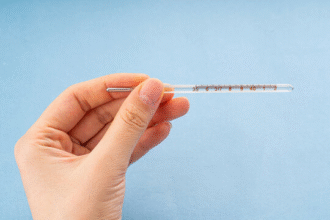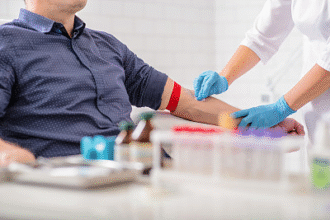Trichinellosis (Trichinella spiralis)
Trichinellosis is a food‑borne parasitic disease acquired by eating raw or undercooked meat containing viable Trichinella larvae. Typical features include gastrointestinal symptoms followed by fever, periorbital/facial edema, myalgias, and marked eosinophilia. Severe disease can involve the heart, lungs, or central nervous system.
Life Cycle and Pathophysiology (Brief)
- Source: encysted larvae in striated muscle of mammals (domestic pigs; wild boar, bear; other carnivores/omnivores). Humans are incidental hosts.
- After ingestion, gastric acid releases larvae, which invade the small‑intestinal mucosa and mature into adults within ~1 week; females release newborn larvae that disseminate hematogenously to striated muscle.
- In muscle, larvae induce a “nurse cell” within myofibers and can persist for months to years; calcification may occur. The intensity of infection determines severity.
Note: Infection is via meat containing larvae, not via ingestion of eggs in feces.
Epidemiology and Sources
- Outbreaks: raw/undercooked pork, homemade sausages, smoked/fermented products without adequate heat treatment, and wild game (bear, boar, walrus) are classic sources.
- Animal reservoirs: pigs (especially with rodent access or fed raw scraps), wild carnivores/omnivores; rodents help maintain farm cycles.
Clinical Phases and Signs
1) Intestinal phase (days 1–7): nausea, vomiting, abdominal pain, watery diarrhea.
2) Migratory/myopathic phase (weeks 1–6): fever (often remittent), periorbital/facial edema, conjunctival/subungual petechiae, myalgias (calves, masseters), weakness; headache, cough.
– Severe complications: myocarditis (tachycardia, heart failure, arrhythmia), meningoencephalitis (headache, confusion, seizures), pneumonitis.
3) Convalescent phase (weeks to months): gradual improvement; residual myalgia/fatigue may persist; complications can leave sequelae.
Diagnosis
- Exposure history: ingestion of raw/undercooked pork or wild game; clusters among co‑diners.
- Blood tests: eosinophilia (often prominent), elevated CK/LDH/AST; inflammatory markers elevated.
- Serology: ELISA for anti‑Trichinella IgG typically becomes positive after 2–3 weeks; confirmatory immunoblot where available. Early disease can be seronegative.
- Muscle biopsy: demonstrates larvae/nurse cells when diagnosis remains uncertain (sample tender, actively involved muscle such as deltoid or gastrocnemius).
- Cardiac/neurologic assessment when indicated: ECG/echo for myocarditis; MRI/CT for CNS involvement.
- Stool exams are not useful for diagnosis.
Differential: influenza and other viral myositis, polymyositis, eosinophilic myositis, sarcocystosis, toxocariasis, cysticercosis, sepsis with myalgia.
Treatment
Start therapy promptly when clinical suspicion is high and exposure is compelling; do not delay in severe disease.
- Albendazole: 400 mg orally twice daily for 8–14 days (with food).
- Alternative: Mebendazole 200–400 mg three times daily for 3 days, then 400–500 mg three times daily for 10 days.
- Analgesics/antipyretics for symptoms.
- Corticosteroids (e.g., prednisone 0.5–1 mg/kg/day) for moderate‑to‑severe systemic disease (high fevers, intense myositis, marked eosinophilia) or organ involvement (myocarditis, CNS, pneumonitis). Begin steroids shortly before or with anthelminthics to blunt inflammatory reactions; taper over 10–14 days per response.
- Hospitalize if cardiac, neurologic, or respiratory compromise; provide supportive care (oxygen, HF therapy, seizure management).
Note: Antiparasitic therapy is most effective early; in late disease with heavy larval encystment, benefit is reduced but still recommended.
Complications and Prognosis
- Complications: heart failure/arrhythmias from myocarditis, encephalitis/meningitis, pneumonia, thromboembolic events (rare). Death is uncommon with timely treatment but risk increases with heavy inoculum and delayed care.
- Most patients recover over weeks to months; fatigue and myalgias may linger.
Prevention (Food Safety and Control)
- Cook thoroughly: ground pork and wild game to ≥71°C (160°F); whole cuts of pork to ≥63°C (145°F) with 3‑minute rest.
- Freezing: effective for domestic pork at recommended times/temperatures; not reliable for wild game (some species/strains are freeze‑resistant).
- Curing/smoking/air‑drying/fermentation alone are NOT reliable.
- Kitchen hygiene: avoid cross‑contamination; wash hands, knives, boards after handling raw meat.
- Farm control: do not feed pigs raw meat scraps; implement rodent control; follow meat inspection regulations.
- Public health: educate about risks of raw meat dishes and homemade sausages.
When to Seek Urgent Care
- Chest pain, palpitations, dyspnea, syncope (possible myocarditis).
- Severe headache, confusion, seizures, focal neurologic deficits.
- Persistent high fever with worsening myalgias and swelling.
Educational information only; management should follow current infectious diseases guidelines and local public‑health recommendations.







